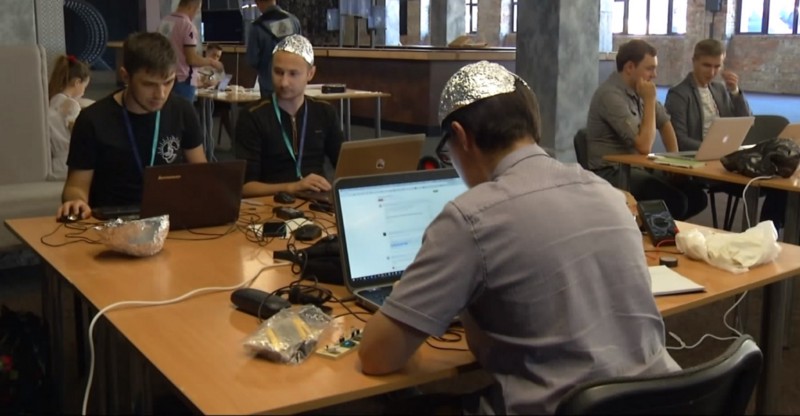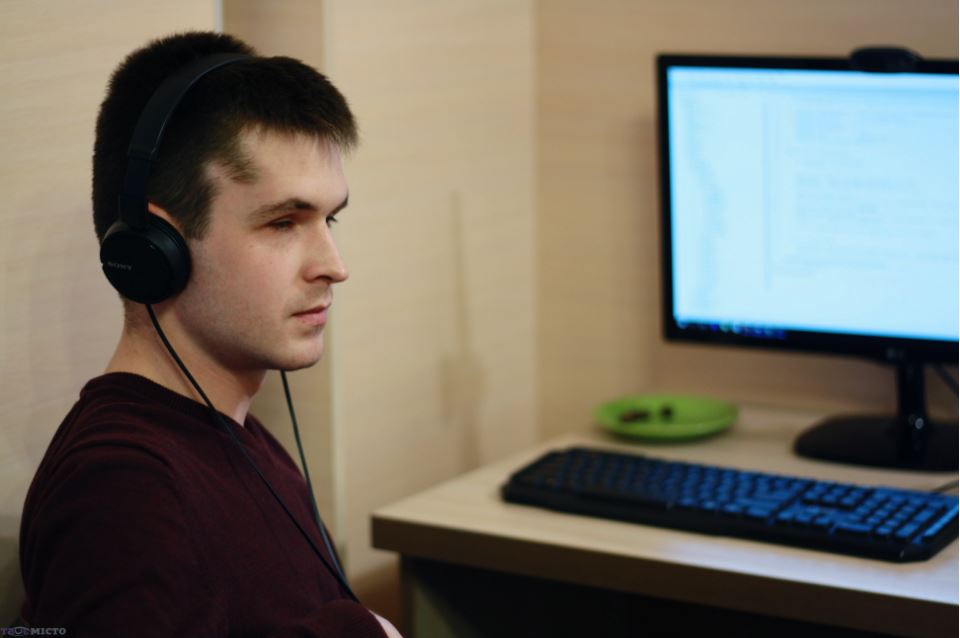Not everyone knows that the first fully operational electronic computer in continental Europe was created in Ukraine over 60 years ago, in 1951. The first electronic computing machine was called the Small Electronic Calculating Machine (Russian: MESM). Despite the humble name, the machine was hardly “small”; it contained 6,000 vacuum tubes, and just barely fit into the left wing of the dormitory in the former monastic settlement Feofania 10 kilometers outside Kyiv. The machine was created at the laboratory of computing technologies of the Institute of Electric Engineering of the Academy of Sciences of the Ukrainian SSR, under the supervision of Academician Sergey Alekseevich Lebedev.The first electronic computing machine was called the Small Electronic Calculating Machine (Russian: MESM)

It began in the 1930’s. The then-young scientist Lebedev was doing research on power grid stability at the All-Union Electric Engineering Institute in Moscow. His work required difficult calculations, and eventually Lebedev began looking for ways to automate and accelerate the calculation process. Thus, the idea was born to create a machine capable of performing complex calculations.
The Second World War starting in 1941 delayed the project, but Lebedev continued to contemplate its possible implementation despite his Moscow evacuation. As Lebedev’s wife Alisa Grigorievna recollects, every evening during the first months of war, when the city sunk into darkness, her husband would retreat to the bathroom with a gas burner to write incomprehensible series of 0’s and 1’s. This turned out to be Lebedev’s attempt to master the binary number system.
In the early fall of 1941, Lebedev’s family evacuated to Sverdlovsk, where he worked on important military tasks. For example, he created a system of targeting stabilization for tank cannons, and later also for homing torpedoes, using only analog parts.
In 1944, Lebedev returned to Moscow, and soon after moved to Kyiv, where he became the Director of the Institute of Electric Engineering. He was also elected an Academician and appointed Director of the Institute of Energy. Half a year later the institute split into two, the Institute of Electric Engineering and the Institute of Thermal Technology, and Lebedev headed the former.
At that time, the top priorities for scientific research in the USSR were rocket science, nuclear energy, and space exploration. However, Lebedev remained true to his pre-war ambition to create a digital electronic computing machine.

The Institute was placed in a half-ruined monastic hostel in Feofania, just outside Kyiv.
Before the war, this building housed a branch of the Kyiv psychiatric clinic. Nazi invaders executed all the patients and turned the place into a hospital. During the liberation of Kyiv, the building incurred significant damage from ongoing firefights. What was left became Lebedev’s laboratory in 1948.
The building was restored. The first floor housed the then-secret electronic computing machine design project, with the biggest room reserved for Lebedev’s future creation. Mechanical workshops appeared in other rooms, and the basement was used for the machine’s power supply facilities.
Lebedev’s team achieved the impossible, within a very short time. His team contained only 12 engineers and 15 technical assistants (very small compared to the over 200 staff members working on the American ENIAC), and completed the machine within 3 years. Among them were not only engineers, but students and technicians for whom this became not only a great career start, but also one of the fondest memories.

The machine took up the largest room in the building, 60 square meters. It worked at an amazing (for its time) speed of 3,000 operations per minute, performing calculations like subtraction, addition, multiplication, division, shift, comparison, absolute value comparison, number output using a log drum, and address modification. The machine was based on vacuum tubes (6,000 of them!) with a total power consumption of 25 kW.

According to team members’ memoirs, the first test task completed by MESM was accompanied by a curious event. Two famous Kyiv mathematicians, S.G. Krein and S.A. Avramenko came up with a pilot task for the machine (relating to ballistics) and calculated the answer themselves first, as a check on MESM’s results. When the machine gave an answer different from the mathematicians’ solution, everyone assumed that MESM had malfunctioned, since it would be highly unlikely for two people to make a mistake in the same exact spot in the calculations. Lebedev, however, decided to test the results himself. The next morning, after working through the task by hand, he showed up smiling, which was a rare occurrence. He said, “Stop torturing the machine, it’s the people who are wrong!” Apparently, the two mathematicians did indeed make a mistake simultaneously, meaning the machine turned out to be “smarter” than man!
In late 1951, a committee from Moscow’s Academy of Sciences arrived to test the machine. It took MESM three days to “pass the finals”. Academicians walked around with expressionless faces between the MESM room, where they gave the machine “tricky questions” to solve, and Lebedev’s office, where they spent a long time in council. Finally, on December 25, 1951 the committee decided to accept the machine for operational use.
In 1952, MESM was basically the only computer in the country, and was used for calculations for such diverse issues as thermonuclear processes, space flight and rocket science, long-distance power lines, mechanics, statistic quality control, etc. One of the most influential tasks solved on the MESM in this period were calculations relating to parallel operation stability of the aggregates at the Kuybyshev hydroelectric plant. The calculation involved nonlinear second order differential equations and had to determine the maximum output of the plant while maintaining the system’s stability. Other tasks included countless calculations for jet engine development and rocket science, ranging from simple multivariate trajectory calculations within Earth’s atmosphere and with insignificant elevation difference, to the incredibly complex tasks for space flight projects. However, even the simplest calculations were complicated by extreme precision demands.
Of course, Lebedev and his team were not the only ones designing computing machines during this period. Numerous scientists from the USA, England and other countries were also working on this goal. For example, the American John von Neumann, who was the first to describe the basic principles of computer construction in a secret report, successfully cooperated with John Mauchly and Presper Eckert to create ENIAC, the first American computer. The English mathematical genius Alan Turing managed to prove that any algorithm with a solution can be solved mechanically. In 1948, Manchester University’s scientists Frederick Willams and Tom Killburn created a primitive computer “Baby” to prove the possibility of program memory storage. A year later, Maurice Wilkes created world’s first computer with a stored program, EDSAC. The machine used a serial operation arithmetic device, which was inferior to the parallel operation device used by Lebedev’s MESM several years later. These eight scientists defined the direction of computer science for the years to come.
After creating MESM, Lebedev moved to Moscow to become Director of the Institute of Precision Mechanics and Computing Technologies of the Academy of Sciences of the USSR. He spent the next 20 years supervising the creation of 18 super-computers. As one of the founding fathers of computer science, Lebedev has earned an honorary mention alongside the world’s greatest computer pioneers.






